The flag of Grenada stands as a dynamic testament to the country’s history, culture, and natural wonders. Its unique design and color palette are not mere aesthetics; they carry profound meanings that resonate with the spirit of Grenada and its people.
Each element has been meticulously chosen, from its bold colors to its emblematic symbols, to represent specific facets of Grenadian identity.
Grenada Flag
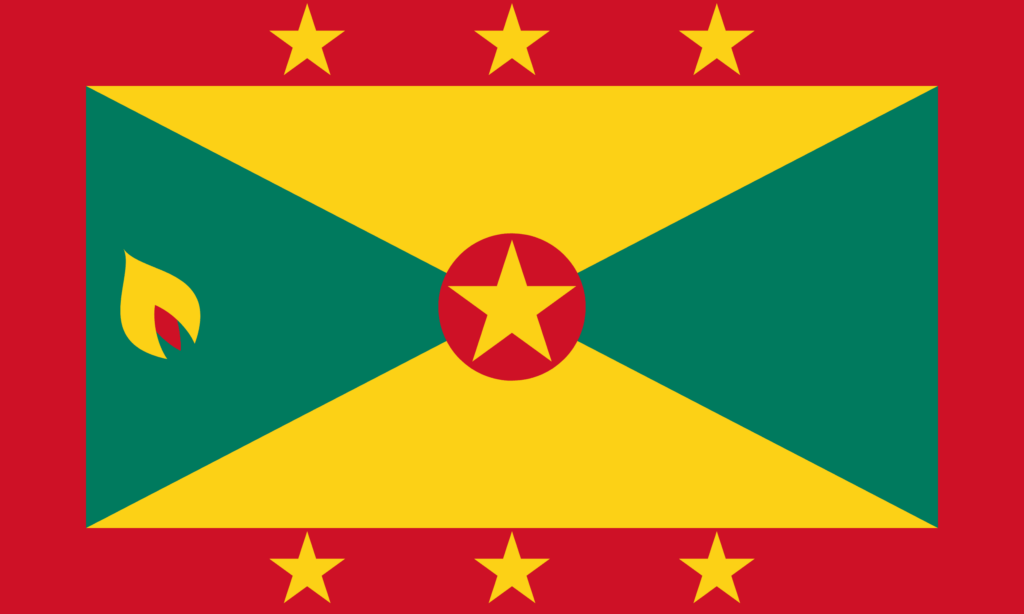
The flag of Grenada is divided into four horizontal bands with a green triangle extending from the hoist side. Three yellow five-pointed stars are positioned within the red bands, symbolizing the tri-island state of Grenada, Carriacou, and Petite Martinique.
At the center of the green triangle is a yellow disk displaying a nutmeg pod, highlighting the nation’s significant role in the spice trade and its nickname as the “Island of Spice.”
Grenada’s Flag: Color Palette
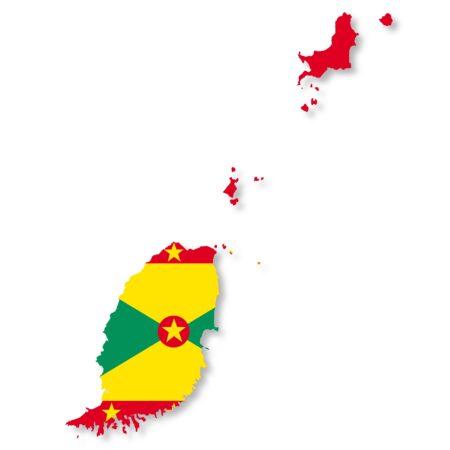
Grenada Flag Emoji: 🇬🇩
Grenada’s flag boasts a vivid color palette, each hue carrying its significance. These colors define the flag’s aesthetics and narrate the nation’s story and values.
Meaning of Each Color
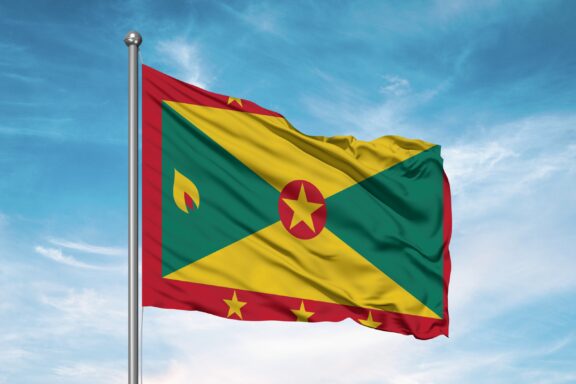
Red
Historically, red often signifies strength, valor, and courage. For Grenada, this color embodies the vigor of the nation’s people and their determination throughout history, especially during periods of resistance and change. The bold red also symbolizes the warmth and vitality of the island nation.
Yellow
Yellow stands for the golden sun that shines over the islands and the warmth it brings. It can also represent wisdom and harmony. In Grenada’s context, yellow highlights the friendliness and welcoming nature of the Grenadian people and the hope and optimism they carry for the future.
Green
Green is symbolic of the lush and fertile land of Grenada. With abundant vegetation, the island is verdant and teeming with life. This color speaks of the nation’s agricultural ancestry and the natural beauty that is a significant part of its identity.
Grenada’s Coat of Arms
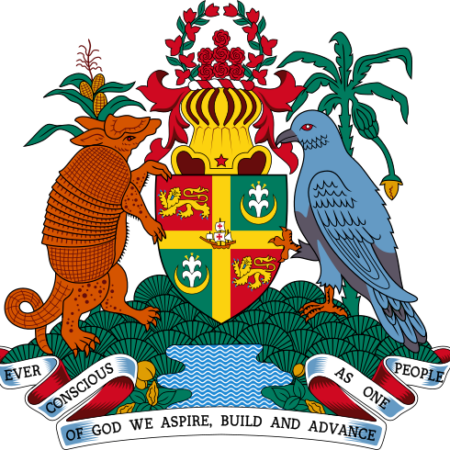
The Coat of Arms of Grenada is a rich tapestry of symbols. At its heart, the depiction of Columbus’ flagship, the Santa Maria, recalls an era of exploration, marking Grenada’s entry into recorded history and its interactions with European powers.
The prominent lion, drawing from British heraldry, is a nod to the island’s colonial past, reminding us of the influence and legacy of British rule. Yet, the essence of Grenada shines through in its natural symbols.
The entire ensemble is bound by the national motto, which articulates Grenada’s spiritual foundation and collective aspirations. It emphasizes unity, progress, and a deep consciousness of a higher power guiding the nation’s journey.
The Coat of Arms beautifully encapsulates Grenada’s multifaceted identity, weaving together its historical chapters, natural splendors, and the spirit of its people.
Historical Evolution and the Meaning Behind Changes
The island’s badge depicted distinct symbols before Grenada’s current flag during its colonial era under British rule. From 1875 to 1903, the badge portrayed Black Grenadian workers at a sugarcane mill, with oxen at the helm.
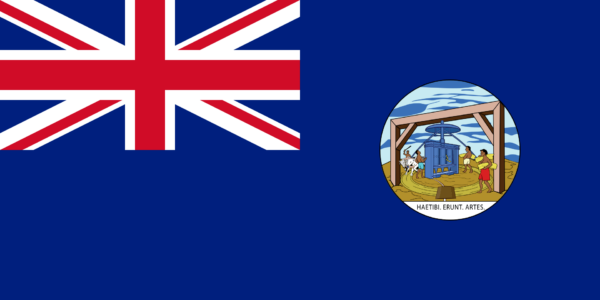
This imagery centered on the island’s agriculture and its workforce. The Latin motto “hae tibi erunt artes,” meaning “these shall be your arts,” further emphasized the significance of this agricultural prowess.
Between 1903 and 1967, another badge came into use. This featured a sailboat, symbolizing the island’s maritime tradition and geographical significance in the Caribbean.
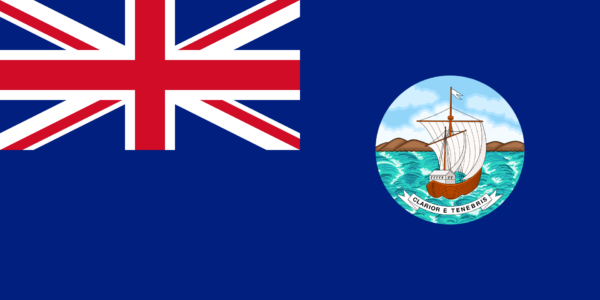
The Latin motto “Clarior e Tenebris,” which translates to “I shine more brightly from the darkness,” may reflect the island’s resilience and hope.
Upon gaining independence in 1974, Grenada adopted its current flag. While the previous badges under British rule leaned heavily on specific economic symbols, the current flag aims to capture a broader representation of the island.
Overall Symbolic Meaning of the Flag
Grenada’s flag weaves a compelling tapestry of the nation’s essence and creates a narrative of a country rich in heritage, blessed by nature, and united in its aspirations. The flag is more than just a symbol; it vividly portrays Grenada’s past, present, and hopeful vision for what’s to come.
Similar Flags to Grenada
In the grand tableau of national banners, Grenada’s flag finds resonance in several other nations. These similarities often transcend geographical boundaries, hinting at shared histories or universal symbols. Here are some flags that bear a likeness to Grenada’s:
Guyana
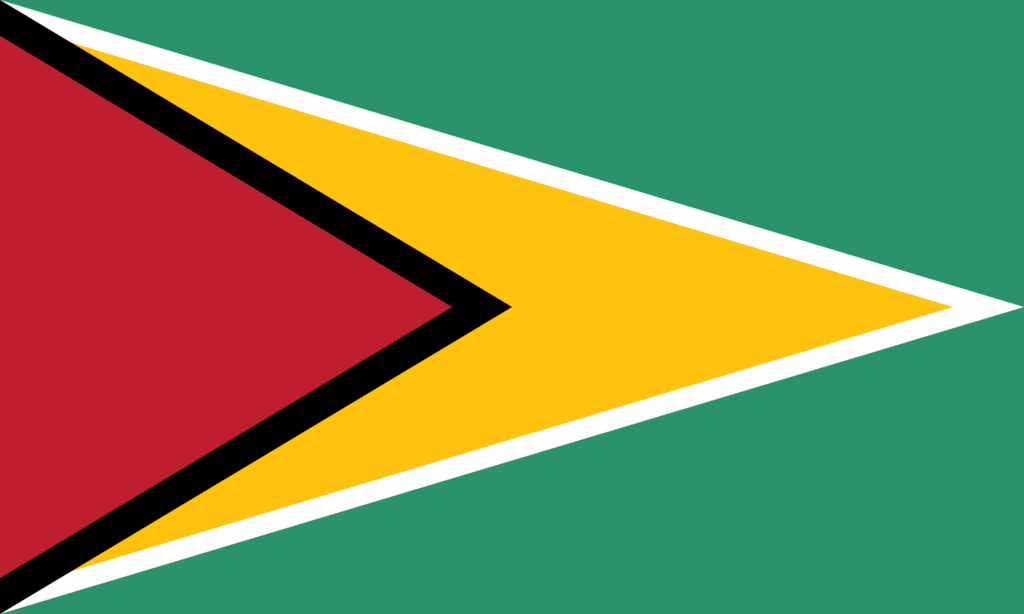
Guyana’s flag, fondly known as “The Golden Arrowhead,” embodies the nation’s rich heritage and diverse landscape. It displays a green backdrop, complemented by a narrow white stripe.
A golden yellow stripe follows a pronounced red equilateral triangle at the hoist, concluding with a smaller black equilateral triangle on the fly side.
Ethiopia
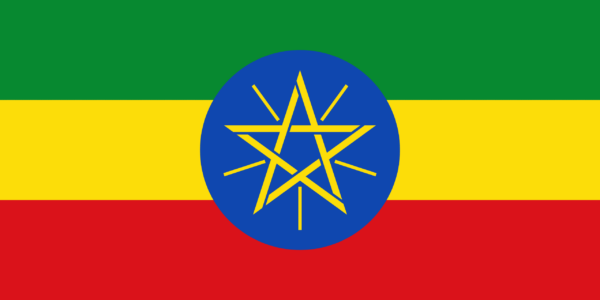
The Ethiopian flag, rooted deep in African history, consists of three equal horizontal bands. The topmost band is green, followed by yellow, then red at the bottom.
The convergence of green, yellow, and red in the Ethiopian and Grenadian flags reflects the Pan-African movement’s influence, which sought to foster unity among African nations.
Suriname
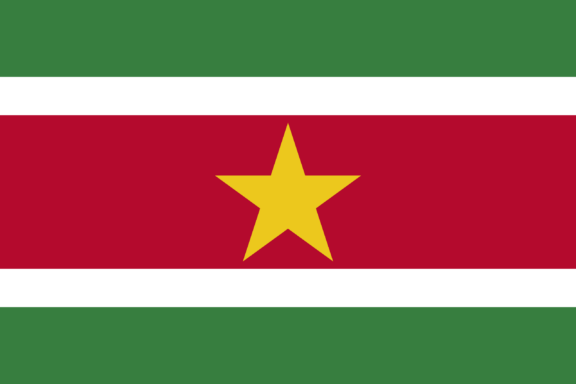
Suriname’s national flag captures the essence of the country’s diverse culture and rich ecosystem. It features five horizontal bands. A double-width green bar at the top is followed by white, a quadruple-width red, another white, and concludes with another double-width green at the bottom.
The heart of the flag, the red band, holds a radiant yellow five-pointed star. The mutual presence of green and red in Suriname’s and Grenada’s flags underscores themes of lush nature and historical struggles.
Lithuania
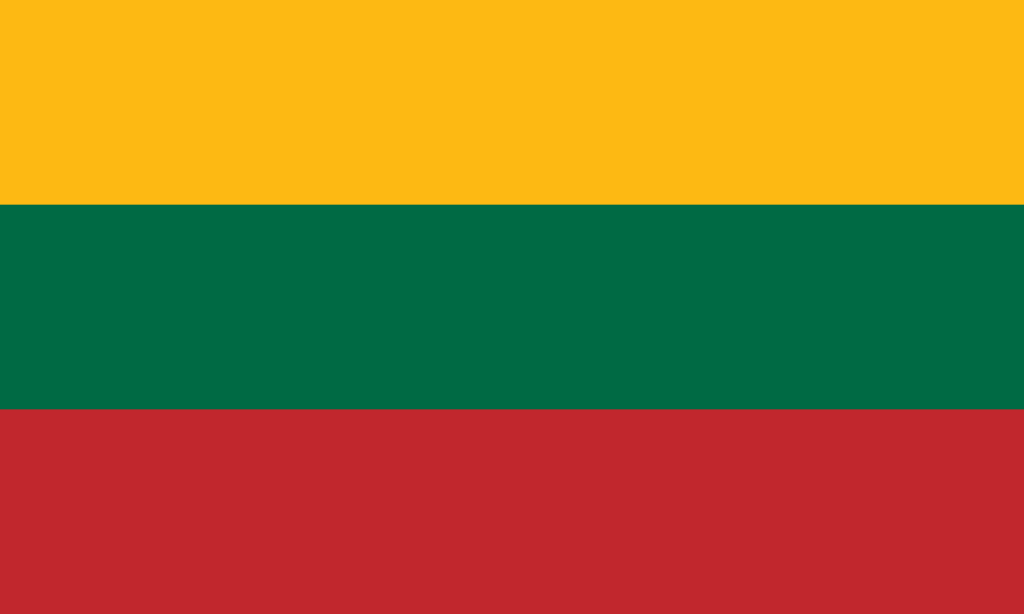
Lithuania’s flag, echoing European traditions, has three horizontal stripes. The top stripe shines in yellow, the middle in verdant green, and the bottom in a deep red.
The amalgamation of yellow, green, and red in Lithuania’s and Grenada’s flags illustrates how certain color combinations can transcend geographical and cultural boundaries.
Conclusion
Grenada’s flag is a testament to the prosperous past of the country. The global mosaic of flags it not only highlights the unique identity of Grenada but also resonates with universal themes that many nations hold dear: the bond with nature, the fire of courage, and the warmth of community.
For the citizens of Grenada, their flag isn’t just a piece of cloth but a reflection of their shared journey, aspirations, and pride. In an ever-globalizing world, it serves as a beacon, reminding them of their roots while guiding them toward a unified future.
Image Sources and Copyright Information
- Grenada Map with Flag Overlay: © Nigel Stripe/Shutterstock
- Grenada National Flag on Pole Against Blue Sky: © Design_Bank/Shutterstock
- Grenada Coat of Arms: © Sodacan/Wikimedia | CC BY-SA 4.0 International
- Colonial Flag of Grenada: © Tcfc2349/Wikimedia | CC BY-SA 4.0 International
- Grenada Transition Period Flag: © Sodacan/Wikimedia | CC BY-SA 4.0 International